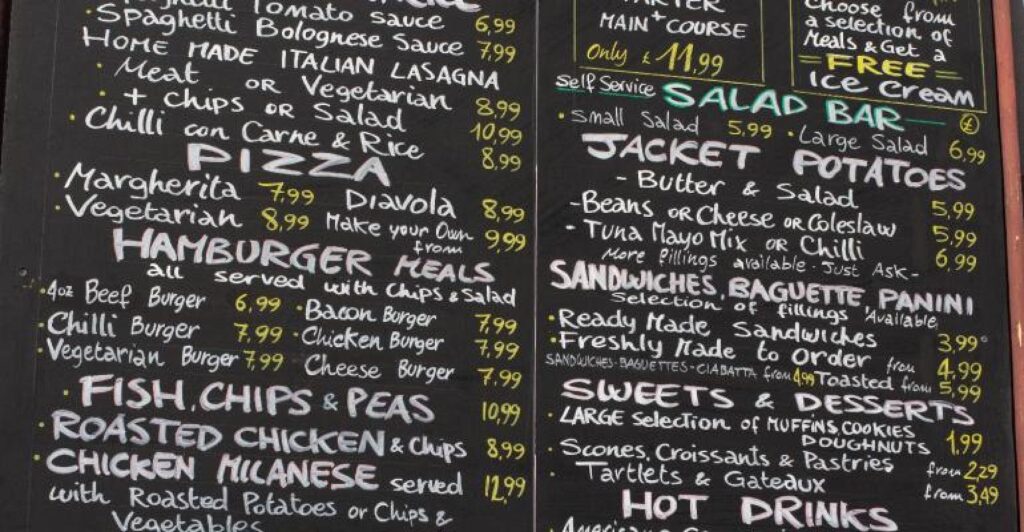Why dynamic pricing just needs a rebrand
Even after discontinuing its dynamic pricing tool, Juicer and other tech vendors continue to tout smart variable pricing tools for today’s economic climate.
03 September 2024
Share this exclusive content from Saladplate

Photo Credit: Moonstone Images / iStock / Getty Images Plus
Six months after Wendy’s started a fierce debate about the fairness of dynamic pricing in restaurants, with consumers comparing price fluctuations throughout the day to Uber surge pricing policies, the question remains: is dynamic pricing a useful tool even in this challenging macroeconomic environment? Last week, technology company, Juicer, known for its delivery-focused pricing solutions, announced that it would be discontinuing its dynamic pricing platform in favor of focusing on the company’s previously reported competitor pricing tools.
“When the Wendy’s situation happened, we saw a very strong influx of interest around our pricing products because a lot of restaurants felt that were forced to pick a side,” Ashwin Kamlani, cofounder and CEO of Juicer said. “Restaurant companies have a lot going and they have to figure out how to prioritize those things. Also, the feedback we got was, ‘we don’t want to be the next Wendy’s. What if a consumer finds out?’ Then, the industry started to soften, and sales started to decline, and restaurants started to focus on bigger issues than increasing delivery revenue.”
Kamlani said that his company made the shift from dynamic pricing tools to competitor-based pricing tools in the wake of the value wars, which saw an influx in value promotions to get price-conscious consumers back in the door from quick-service heavy-hitters like McDonald’s, Wendy’s, Burger King Taco Bell and KFC. This new tool uses AI to grab pricing information and special offers from competitors within a two-mile radius and offers up pricing solutions for operators.
“Deals were coming out more frequently, so I think restaurant companies wanted to get a better handle on price changes in the market more quickly and know when a big deal came out,” Kamlani said. “The franchisees of these larger chains have taken price a lot over the years and may not be reacting quickly enough to consumer pushback on high prices…. So, we had to make the decision of which tool makes more sense for us. We still aspire to come up with an even better, broader data-driven revenue management approach to restaurant operations.”
He added that even though competitor pricing “plays a role” in understanding what the market will bear, it’s only one piece of the puzzle and he would “never recommend someone make pricing decisions based [solely] on competitor data.” He also believes dynamic pricing “absolutely still has a role” in the industry, even if the definition expands.
Juicer is not the only company testing out different pricing tools based on variables other than traffic and demand. WookAI is a restaurant technology startup that offers pricing suggestions and real-time adjustments based on exact supply chain costs. Operators can create and store recipes for each menu item, calculate the cost of goods for each (including packaging and utensils), and get suggested sales price data that will meet a reasonable profitability threshold.
To David DeSantis, cofounder and CEO of WookAI, pricing that changes based on time of day is akin to surge pricing, and in the long-run, will drive consumers away. Dynamic pricing is a different strategy that all operators should be utilizing:
“To me, dynamic pricing is just automated pricing that changes based on data,” DeSantis said. “Planning prices proactively with good strategic information is the responsibility of all upper-level management at any food service organization.”
Not all technology vendors think that dynamic pricing is a dirty word though, even during times of economic uncertainty. Technology company Chowly has begun offering a smart pricing tool for delivery apps that will automatically increase and decrease menu prices based on demand in order to maximize delivery revenue. Chowly CEO Sterling Douglass said that in one day, the company created $100,000 in profit for independent restaurants using their smart pricing tool, with an average menu price upcharge of 18%.
“Over the past six months, a predictable story arc has occurred,” Douglass said. “Consumers naturally pushed back on the thought of prices going up, similar to the initial dynamics of dynamic pricing in other industries. In the restaurant space, Chowly has seen consistent growth and adoption of its dynamic pricing tool… With the technology landscape going through so much consolidation, it’s not a surprise to me that dynamic pricing might have more success as part of an off-premises platform than as a stand-alone entity.”
Although it might seem like pricing tools don’t make sense for an inflationary environment, Robbie Earl, president of Linked Eats (which owns the Sauce smart pricing platform), states that if operators are transparent, dynamic pricing can be incredibly useful. Sauce for example, offers pricing tools that shift values based on time of day and during marketing campaigns.
“Customers tell you where they are with their wallets,” Earl said. “We’re currently in a value meal cycle, coupled with intense discounting. Discounting down and knee-jerk reactions to what competitors are doing is a race to the bottom. Sometimes a hammer can do the job for a task and other times you need to be surgical. What we offer is surgical and highly tactical.”
“Dynamic pricing” doesn’t have to be limited to demand-based pricing, since it just means “continuously changing pricing.” These other variables mentioned — including comparing your prices to your competitor, and changing your prices based on supply chain costs — are examples of “smart pricing” or “variable pricing,” which might be a better rebrand for the phrase that has turned sour for consumers who don’t want to be duped or manipulated at their drive-thru stop.

Source: Nation’s Restaurant News



